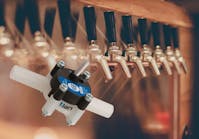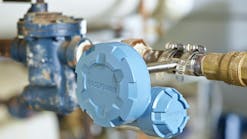Maximizing return on investment from your process analyzer
Process analyzers can help plants achieve accurate measurements in an industrial sampling system, helping to ensure that the desired amount of on-spec product is being produced safely and at the lowest cost. Analyzers are, however, a more significant investment than other measuring devices. As such, procurement managers at some organizations may require justification for this type of purchase. Being able to demonstrate the clear value and return on investment for using an analyzer for quality control can be helpful.
By helping to improve production outputs and reduce system downtime, process analyzers can indeed demonstrate sizable returns on investment if they are set up and integrated properly into the system design. To calculate a return figure, operators can gather the upfront cost of purchasing an analyzer and the ongoing cost of ownership to understand anticipated expenses. Then, they can note the expected benefits and resulting savings the analyzer enables. It is possible such an analysis can demonstrate savings in the magnitude of up to thousands of dollars per day.
Multiple analyzers, operating either manually or automatically, will help your plant achieve this savings goal across three key categories: process control, quality assurance and plant safety. This article will explore each of these topics and how they can influence your return on investment analysis.
Process control
Process analyzers allow for the fine-tuning of fluid process streams, helping organizations ensure the production of high-quality, profitable products.
They can be helpful no matter the market conditions, which often influence an organization’s process control strategy. Under softer demand conditions, and with a plant running at below maximum capacity, process control is typically focused on minimizing the cost of production — including energy consumption and waste — while maintaining high quality. When demand is high, analyzers can help operators maximize throughput to sell as much product as the plant can produce. But under any market condition, customers will expect a product that meets their specifications and quality expectations. A poor product can dramatically impact profitability, so plants must consistently be producing to specified, or better, quality levels.
There is, however, a cost of producing a product of too high quality — and analyzers can help eliminate this “giveaway” by reducing random product quality variations. Figure 1 illustrates the concept. When product quality variations are significant (shown by the blue curve), a plant produces a higher average quality for fear of making an off-spec product — but achieving this level of quality will reduce throughput, increase production costs, or both.
Operators can use analyzer measurements and process controls to reduce the quality variation (green curve), thereby driving the average quality down closer to the specification limit. In this case, they will still be making on-spec product, just more efficiently or more copiously than when they are focused on higher average quality.
In any market, the return on investment for a process analyzer used for control is calculable from the value of increased throughput or the reduction in operating costs.
Quality assurance
The accuracy of analyzer measurements is vital to a producer’s profitability, and poor analysis can have a significant negative impact. A bad product that makes its way into a customer’s hands can be severely damaging to a producer’s reputation. By contrast, a perfectly good product may end up rejected simply because an analyzer is out of calibration. The tangible loss from the latter scenario can be calculated based on plant data, but the cost of losing a customer due to an off-spec product can have larger ramifications.
A process analyzer that helps to mitigate either scenario can easily justify its expense and continued cost of ownership. It should therefore be taken into consideration when demonstrating return on investment.
Plant safety
In any industrial environment, the safety of workers is always the highest priority. One of a process analyzer’s most important benefits is its ability to detect and measure process conditions that may have the potential to endanger nearby workers and equipment.
Quick analytical data can be one of the most effective ways to detect and stop a potentially dangerous chemical reaction inside a fluid system. An analyzer can detect media conditions that, if left unattended, could rupture a pipe or vessel and endanger personnel. This benefit may justify the expense of quality process analyzers for use throughout an entire system.
Additionally, many chemical processing plants are beholden to local and federal environmental compliance requirements. For instance, continuous emissions monitoring systems (CEMS) and effluent water analyses are legally required in many locations around the world. Plants must install safety and environmental monitors regardless of their cost and return on investment to comply with these kinds of regulations.
Calculating your return
Before deciding on an analyzer purchase, combine all the associated expenses as a capital investment. Your return figure is the resulting net cash stream over the lifetime of the analyzer. Common capital investment costs associated with analyzers often include:
- Sample conditioning systems.
- Rack, panel, open shelter or HVAC analyzer housings.
- Probes, pumps and field stations.
- Installation, including fast loops, and disposal arrangements.
- Startup and commissioning.
- Initial spare parts stock.
Figure 2 provides a general estimate of the costs associated with various kinds of analyzers installed in air-conditioned analyzer houses. For a simple estimate, first add up your analyzer costs and multiply by three for the material costs; by four for the cost of a fully commissioned system; or by five if including project management from your site. This simple calculation can work well for a variety of analyzer types. Note: This estimate may be high for more expensive NMR analyzers, or low for inexpensive oxygen, pH and conductivity analyzers.
A return on investment figure can be calculated with a spreadsheet function — many plants can anticipate at least a 50% return. If making the case to management, ensure that you can support your findings and can speak to how analyzers can make a positive impact on your system and its profitability.
Working with a reliable supplier in sourcing your fluid system components can also be helpful in determining the potential benefits of upgrading analytical equipment. Process analyzers are, once again, an investment that should be considered. If integrated correctly, operators will be satisfied with the results.
An original version of this article appeared on the Swagelok Reference Point blog here: www.swagelok.com/en/blog/calculating-roi-process-analyzer-technology.
Karim Mahraz is a product manager, Analytical Instrumentation, with Swagelok Company.
Karim Mahraz | Product Manager, Analytical Instrumentation
Karim Mahraz is a product manager, Analytical Instrumentation, with Swagelok Company.





